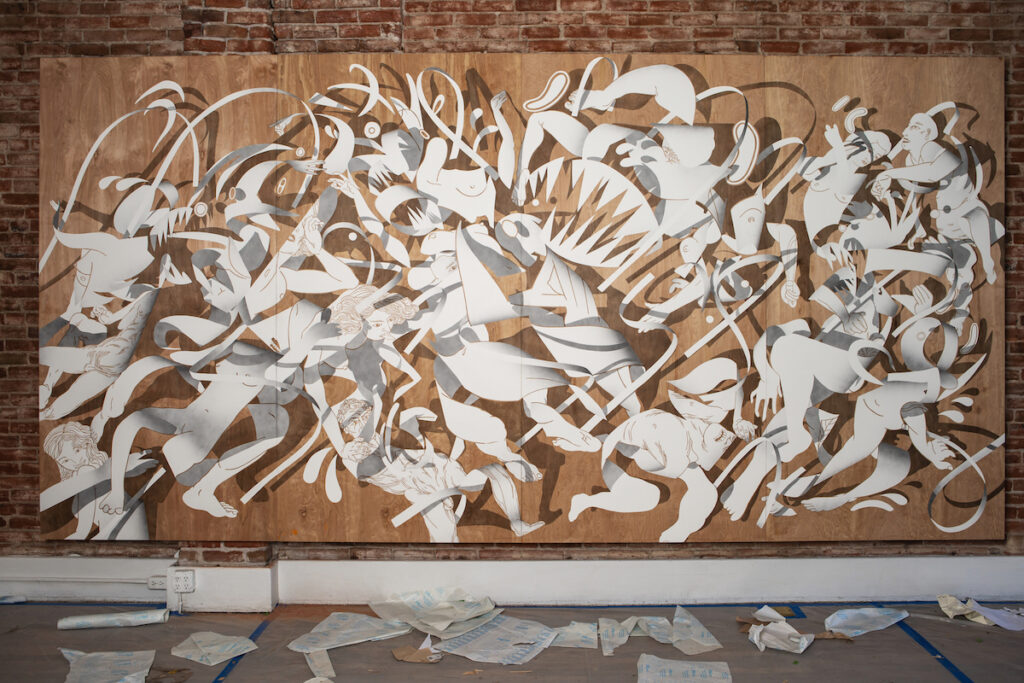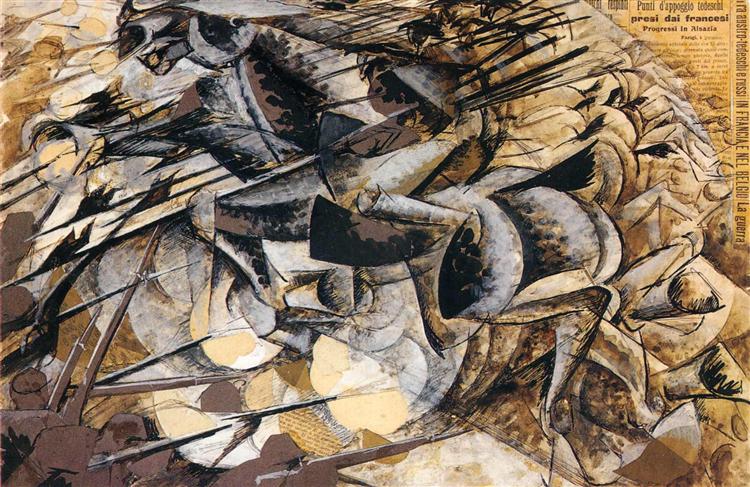I believe that one of the most significant attributes of Diego Rodriguez-Warner’s artwork is its dynamism, its unmistakable energy and sense of motion, achieved through his complex compositions of twisted, contorted figures, and curvilinear ribbons. Zip ribbons, or motion lines, common in Japanese anime and Western graphic novels, are often employed to imply movement, speed, force, and direction. In Rodriguez-Warner’s work, they emphasize volume within an illusionistic dimensional space, affirming the spiraling contours of the human figures, creating energetic vortices, while cunningly constructing aesthetic compositional patterns, rhythms, and tempos.

latex, spray paint, on panel
Image by Amanda Tipton Photography | FB- Amanda Tipton-Photographer | IG – @amandatiptonphotography
For me, this particular quality of his work, especially evident in his most recently premiered 8’ x 16’ four panel piece, “White Painting”, invokes the vigor and vitality of early 20th century Italian Futurist painter and sculptor, Umberto Boccioni, specifically his 1915 collage, “Carica di lancieri” (Charge of the Lancers).

Rodriguez-Warner exploits this compositional technique to capture the viewer’s attention and draw them into the frame’s illusionistic space. The eye is pushed and pulled in multiple directions, traveling across the surface, from side to side, corner to corner, but also diving into and resurfacing from the depths of the dimensional artifice, confounding one’s perception with his devious and deceptive reversals of foreground and background. The real success, however, is in his works’ ability to keep the viewer engaged, refusing to let them leave, keeping them entangled within the action of attempting to unravel the image, but remaining perpetually unresolved. A recognizable foot or finger curls away, and dissolves into an abstract gestural flourish, with the indiscriminate spontaneity of a flag flapping in the wind. What we know and can quickly identify, devolves and becomes unknowable, while conversely, what is at first obtuse and enigmatic, emerges from the frenetic labyrinth, suddenly revealing its nature, its form, its truth.
In this way, I believe that Rodriguez-Warner masterfully achieves a definitive representation of the illusory reality of our collective state of mind in the modern area. We are inundated by data, and saturated with stimuli, confronted and challenged by complex and ofttimes conflicting narratives, constantly struggling to determine what, if anything, is real, true, and immutable, as opposed to what has been filtered, informed, or deformed by our own prejudices and perceptions. Yet somehow, despite the cacophony his work expresses, through his considered composition, the riotous din is transformed and transfigured, transcending into an intricate aesthetic symphony of sight and seeing. His work never fails to tickle my brain.
Eric G. Nord
